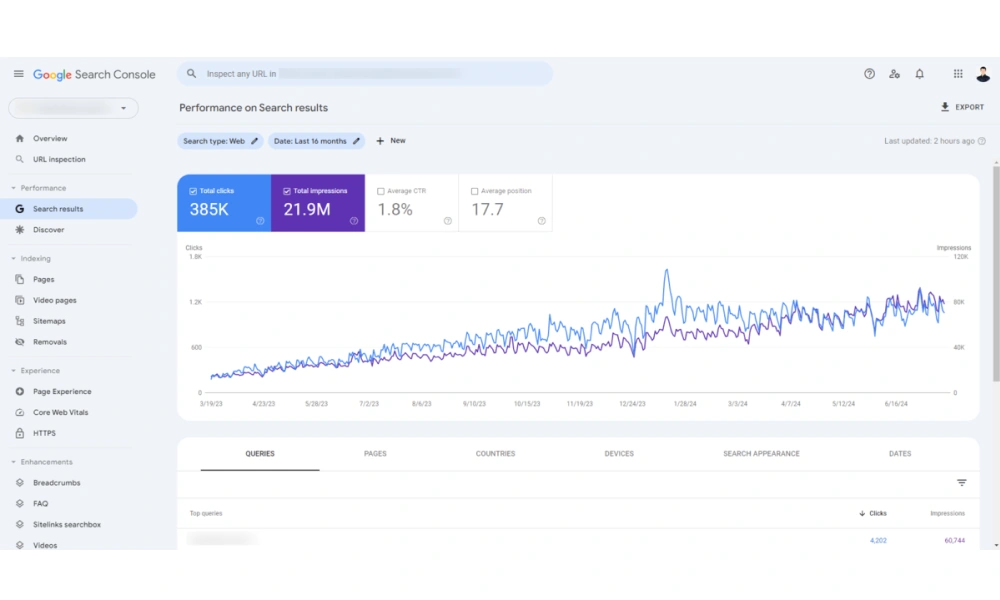
Approaches to Generating High-Quality SEO Content Briefs Beyond AI

Content Marketing Manager
Don’t you think that we, as content creators, miss out on some serious creative mojo by always turning to the robots?
Human creativity and expertise matter a ton when it comes to building a content brief, and the key is knowing how to balance AI with a deep understanding of the content marketing strategy you bring to the table.
In this article, we’ll look at some awesome, human-powered ways to generate great SEO-focused content briefs. Let’s jump in!
Table of Contents
Let’s first understand the foundations of effective SEO content briefs
Let’s start with the basics.
What makes a content brief tick? It’s definitely not rocket science, but nailing these fundamentals can make a ton of difference.
First up, we’ve got the target audience. You need to know who you’re writing for, what keeps them up at night, and what makes them click. Defining your ideal reader is paramount for every piece of content you create.
Then, establish your key messages. These are the big ideas you want your readers to walk away with, and these should align with your overall content goals.
And last but not least, the SEO stuff. Primary keywords, secondary keywords, user intent, internal links, funnel stage… with the mention that SEO isn’t just about pleasing algorithms (though that helps your SEO performance), but rather about pleasing your target audience and ensuring good user experience. Avoid keyword stuffing at all costs, as it harms user experience and search engine rankings.
Do you need insights from SMEs (subject matter experts)?
Sometimes, you need to bring in the big guns – and by that, I mean subject matter experts (SMEs).

Here's how I like to work with SMEs:
First, I set up a casual chat. I come prepared with a few key questions, but I keep things open-ended. The goal is to get them talking about what they're passionate about. You'd be amazed at the nuggets of wisdom and valuable insights that pop up when an expert gets on a roll, often from relevant sources you hadn't considered. This initial discussion can form the basis of a detailed content outline.
After our chat, I'll jot down the main points and any surprising valuable insights. Then, I'll shoot them a quick follow-up email with my takeaways. This does two things: it shows I value their input, and it gives them a chance to clarify anything I might have misunderstood. With their feedback, I can then weave these expert insights into my content brief, adding that extra layer of depth and authority that readers (and search engines) love. This human touch is crucial for creating truly effective content.
In-depth competitor analysis
We’re not looking to copy their strategies but rather find out what they do well and add to it by incorporating our personal knowledge and product benefits, identifying gaps in their top-ranking articles.
See what topics they’re covering, what angles they’re taking, and more importantly: what are they NOT talking about? This helps you find opportunities for truly unique and valuable content. Are there opportunities to add external links to authoritative, non-competing sites to bolster your points?
Look for those unique perspectives or insider tips that only you and your team can bring to the table. Maybe it's a quirky feature of your product that solves a problem in a way no one else does. This is key to improving your search engine rankings.
Incorporating surveys and customer feedback to uncover pain points
Your customers are sitting on a goldmine of valuable insights that can help your content strategy.
You can set up a quick survey or hop on a call with a few customers. Ask them about their struggles, what made them choose you, and what keeps them coming back. This helps tailor content to a specific audience segment.
Now, let's say your survey reveals that most of your customers struggle with time management. Boom! There's your next content brief. You could create a guide on productivity hacks featuring how your product fits into the mix, perhaps as a series of blog posts, or even a single, in-depth piece of content. This is how you create relevant content.
Here are some questions to get you started:
- What was your biggest challenge before finding our product?
- How has our product made your life easier?
- What's one feature you wish we had?
- How would you explain our product to a friend?
- What's the most surprising benefit you've experienced?
- If you could change one thing about our product, what would it be?
- What made you choose us over competitors?
- How often do you use our product?
- What's your favorite feature and why?
- What content would you like to see more of from us?
This list of questions can be a fantastic starting point.
Data-driven approaches
First stop: Google Analytics.
Check out which pages are getting the most love. Are people spending ages on your how-to guides but bouncing off your product pages? That's a clue about what kind of content to focus on. And don't forget about the search queries people are using to find you – each one is a potential target query.
Now, let’s talk tools.
First, you should have GSC installed (Google Search Console). It’s one of the keyword research tools you need for tracking your keywords and website performance when you’re getting started. Then, pick a good keyword research tool and prioritize a few primary keywords and secondary keywords to get started (or use Yahini to do it for you). This data helps with ongoing content optimization.

Persona-specific SEO content briefs
At some point, you’ll need to get into the heads of the people you’re trying to reach. Understanding the customer journey is vital.
Start by chatting with your sales and customer service teams. They're on the front lines, hearing all about customer struggles and wins. Mix that intel with data from your CRM and social media insights. Before you know it, you'll have a cast of characters that feel real – complete with quirks, goals, and pet peeves. These personas guide your entire content creation process, especially when briefing freelance writers or your in-house content team.
For each content brief, pick a persona and make them the star. This helps ensure your writing style is appropriate. This means tailoring the tone and vocabulary to resonate with that specific persona.
Are you writing for "Tech-Savvy Tina" who wants the nitty-gritty details? Your brief might call for in-depth how-tos and product comparisons, focusing on a specific target keyword for her needs. Or maybe it's "Busy Bob" who needs quick solutions? Think bullet points, short videos, and actionable tips. This helps produce impactful content.
Develop a content brief template library
The idea is simple: build a collection of templates for different content formats, audiences, and goals. A well-structured detailed content outline within these templates is crucial. Having a consistent style guide helps content writers maintain brand voice across these different content pieces.
Maybe you've got a template for how-to guides, another for product comparisons, and one for thought leadership pieces of content. These templates streamline the content workflow.
Each template should have sections for key elements like target audience, main points to cover, SEO requirements (like the target keyword and relevant keywords), and desired outcomes. A clear content structure should be defined within the template, and these templates can often be managed as a Google Doc for easy team access.
The beauty of this is that you're not starting from scratch every time. You've got a solid foundation to build on, which saves time and keeps your content consistent. This is much more efficient than a completely manual process for every brief. Content managers will appreciate the efficiency this brings to the content production process.
On the other hand, you can use Yahini to help you build a full-on content strategy. This approach can be beneficial for business owners with limited time.

Yahini's been trained by actual content strategists, so it brings some serious smarts to the table. You just feed it your URL and some basic info about your business, and bam! It spits out a full content workbook with custom briefs for each primary keyword.
These are detailed content briefs that are tailored to specific funnel stages, content formats, and audience needs. It even helps balance your content across the marketing funnel, aiming for that sweet spot of 50% bottom-funnel, 40% middle-funnel, and 10% top-funnel content. This helps ensure you're creating content for search engines that also meets user intent. Ultimately, this leads to high-performing content.
Use AI, but don’t forget about the human review
Look, AI tools are awesome, but they're not the whole story. Even the best content optimization tool needs human oversight.
The strategies we’ve covered here are all about tapping into that human touch that makes content truly work. It's about the synergy between human expertise and AI capabilities to refine the content production process. Experienced writers know how to leverage AI as a starting point, then add their unique writing style and insights from relevant sources.
A good content marketer knows this balance is key to producing high-quality content consistently. It’s about optimizing the entire writing process, not just individual tasks, and performing effective keyword optimization.
And if you want to take your content strategy to the next level…
Yahini offers you the strategic advice you need to create a content strategy from the ground up. Its AI has been trained by seasoned content strategists, providing you with expert-level SEO content briefs right at your fingertips.
Ditch the generic outlines! Sign up now.
-
Need a 24/7 content strategist? See how Yahini can help you craft perfect SEO content briefs.
-
Any questions? I’m happy to help! Just reach out to us!
-
Not ready yet? Learn more about Yahini here.